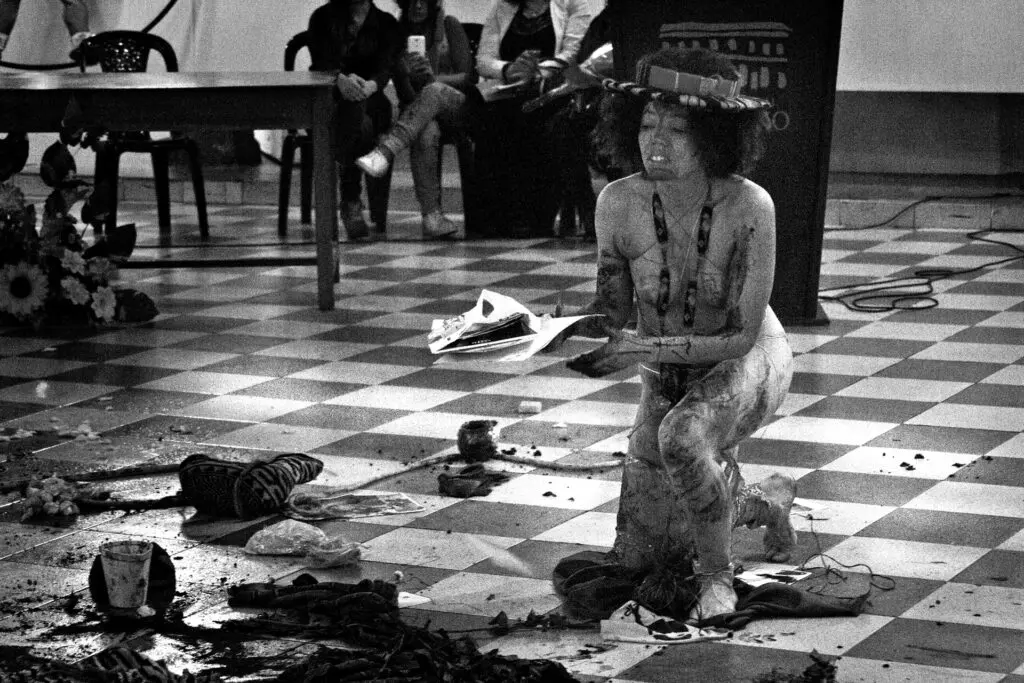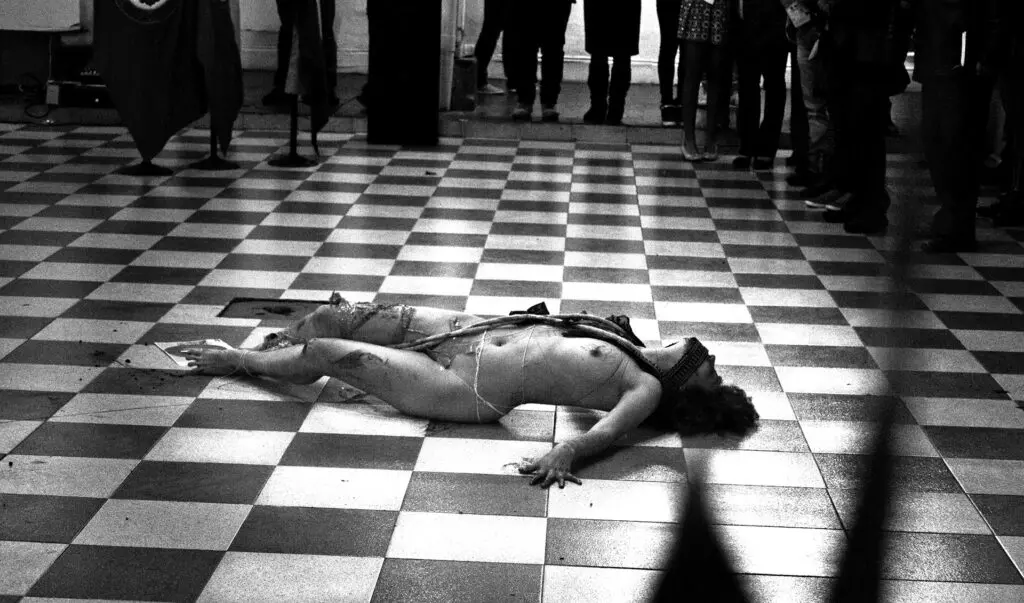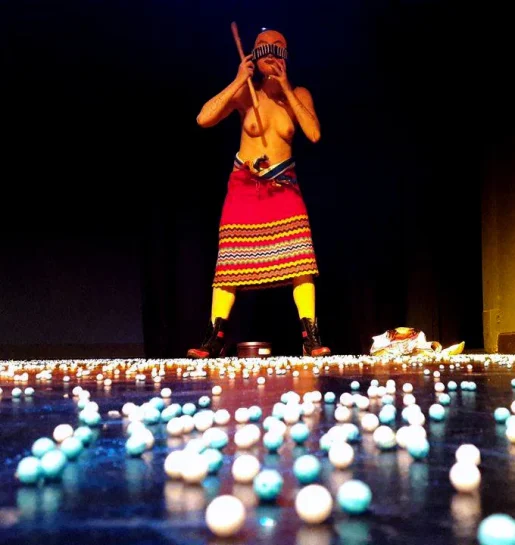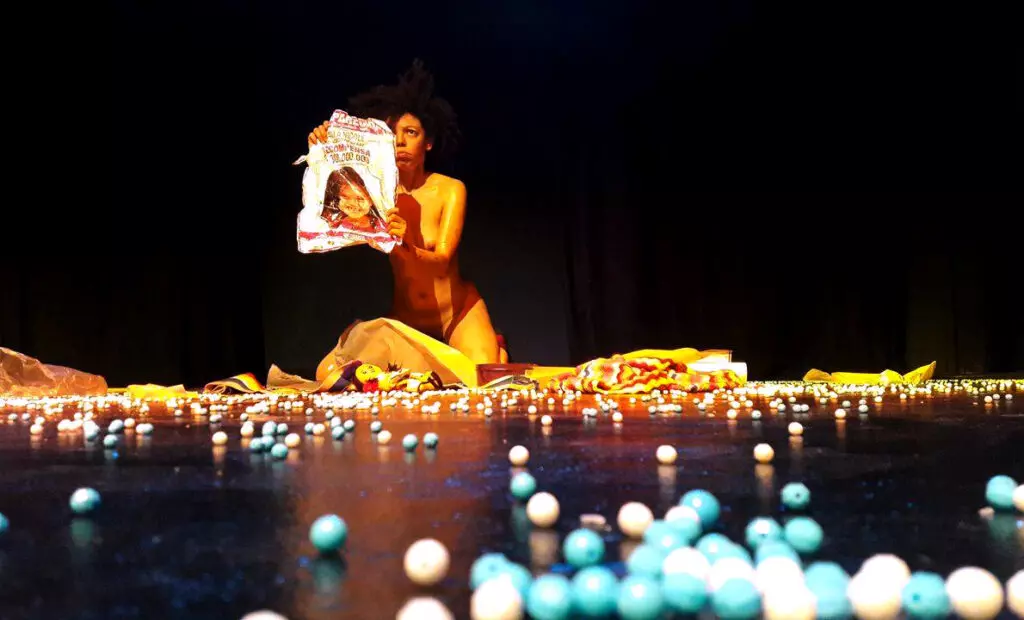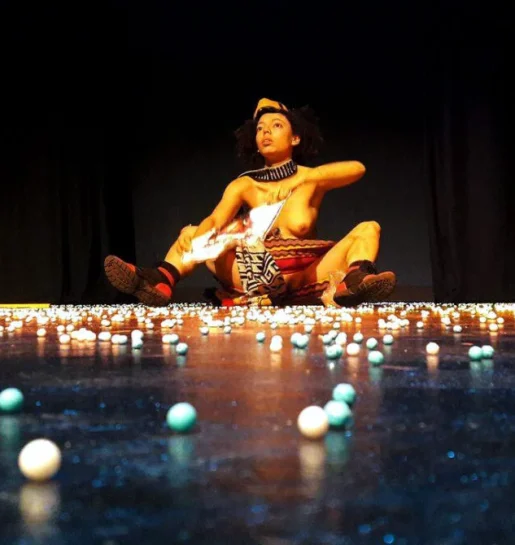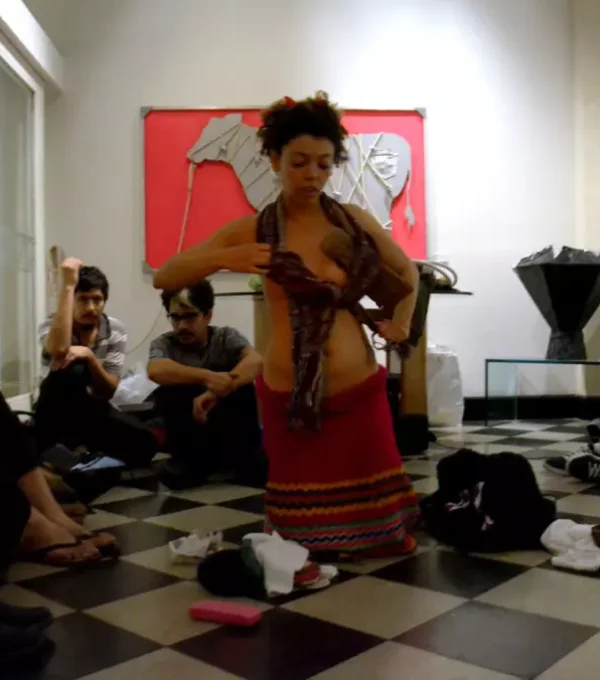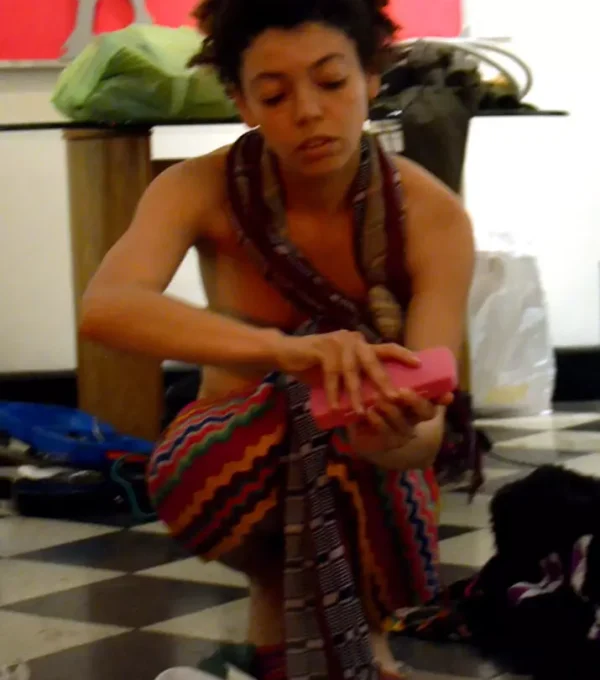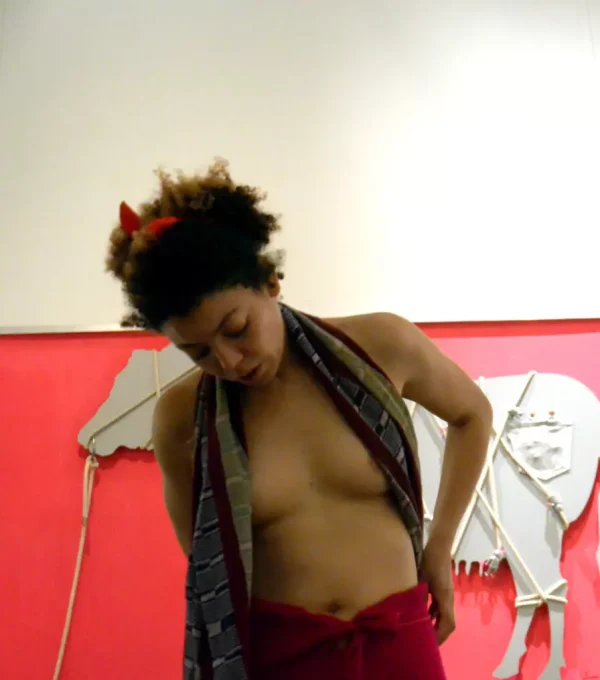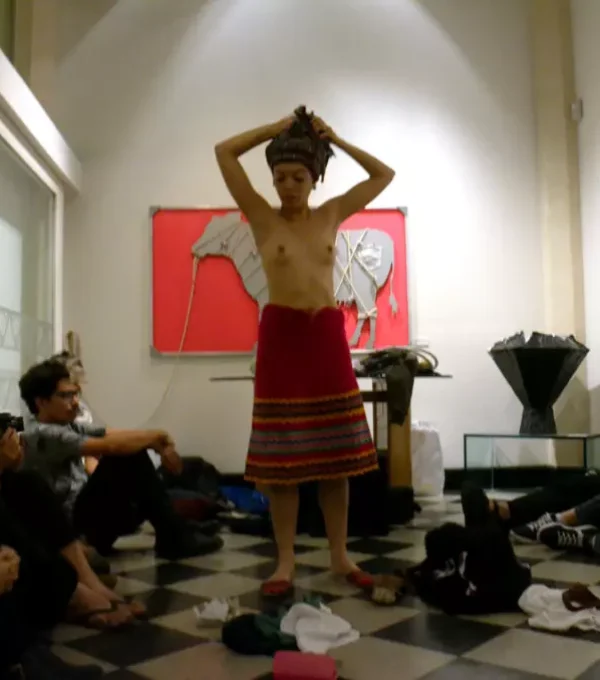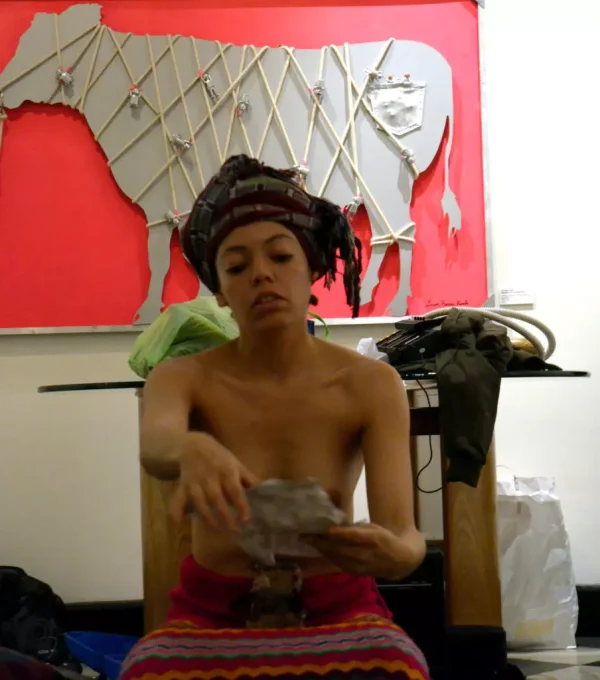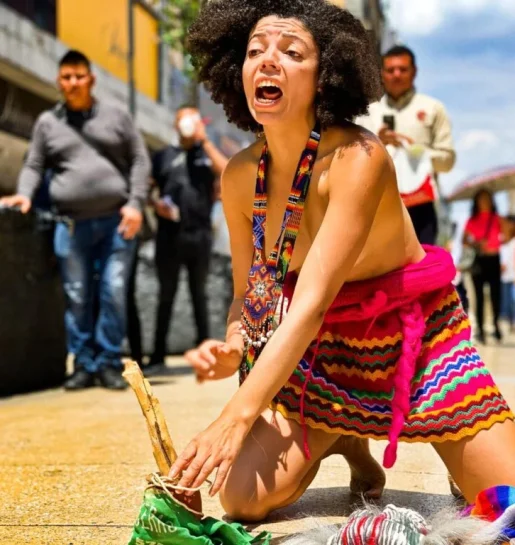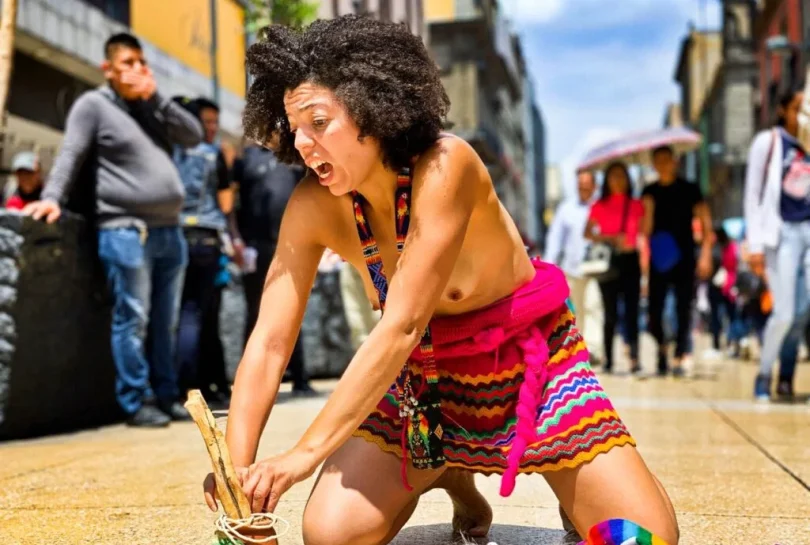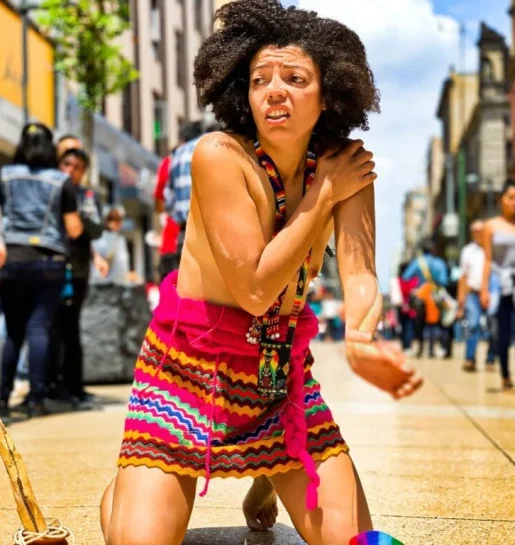Performance
Performance helps you
to go through and analyze the ancestral routes and healings of memory.
Condor
Master's thesis in Latin American arts
undav 2021
I submit for consideration the work of the master's thesis in contemporary Latin American arts that is not only part of graduation but the pain that comes along with walking and searching.
I do not pretend that we identify ourselves but recognize ourselves in multiraciality.
The dance "El cóndor del mundo" has elements and costumes that represent part of what we are as beings and subjects that erase the borderlines.
The baton represents being part of authority, it reflects the essence of indigenous communities.
in the exploration of memory and cultural and indigenous worldview,
that persists in the pain of the body.
To do this, in this thesis the myth is assumed as a translation of knowledge that moves from the magic word to the historical word, thus referencing the difference between the non-Western world.
It also recognizes the body and dance as a link to transfer the voice and empathy of the other and recognize the oral tradition.
The condor of the world is a totem that reflects our ancestry. and reflects an identity part of the transformation of an animal as a reflection of overcoming or flight to connect the sky with the earth.
Introduce to the other the message of the indigenous woman who decides to leave her place. In indigenous communities, the traditions and customs of different ethnic groups are the basis through which their tribes recognize each other and forge alliances with each other.
The worship of gods made of stone and clay, which involves a memory of the primitive era that persists today, becomes a ritual with characteristics that detach it from past time and restore it to the present.
Desde la relación que tengo entre academia y corporalidad sentí muchas veces que mi cuerpo se oprimía al tratar de esforzarme con mis danzas indígenas, y sabiendo aún la apropiación e importancia de ella sobre mi cuerpo.
Dance entered performance not as a technique but as resistance and communication of memory that runs through the body every time it is present in each space. This body is multiple, it recognizes itself from one of the many indigenous ethnic groups to which we belong from autonomy.
I argue that the academy understands the natural movement of each of these bodies; not as objects of study or as techne that should belong to a research group but as independent axes.
Impractical theory nullifies motion.
In my own experience, it is important to recognize that popular practices and tact have been a priority so as not to silence the voice of the other. The body is located as a map detached from our extensions and hemispheres.
So the idea is to listen to each other amid in so much boiling of images and sounds to find our fears, which are what activate us to fight but not as a scar, but as a trace that marks resistance, but as I have been working on it, I insist that our body is a whole. , coupled with our identity, memory, and bodily coexistence with nature. Our feet consume the energy of the stones that trap a language constituted by the jungle. To walk. Feeling your feet on the sidewalk is one thing; feeling your feet with shoes is another thing; one thing is one thing, the slow movement of the foot with the breath when walking quickly. We demobilize.
The Kamentza Crown
In this performance I had the opportunity to make the Kamentzá Crown, this crown symbolizes the thought between our interior and our traditions, the link between our hands and heads. This crown was helped to make with Lucy Villarreal who was murdered on December 24, 2020. Now, after making the crown in another country, it helps me understand that the ties and the pull symbolize the union of spirits between the past and present that transforms a future.
Nicole Palacios
During my stay in Argentina, Buenos Aires was my second country of study and artistic connections; I was able to carry the message of the posters left in a state establishment to be shown in street actions, a face that can be anyone at any moment of disappearance that leads us to transfer the pain and footprints without a trace, after a while, I was able to meet the mother of Nicole Palacios and mourning from the ritual.
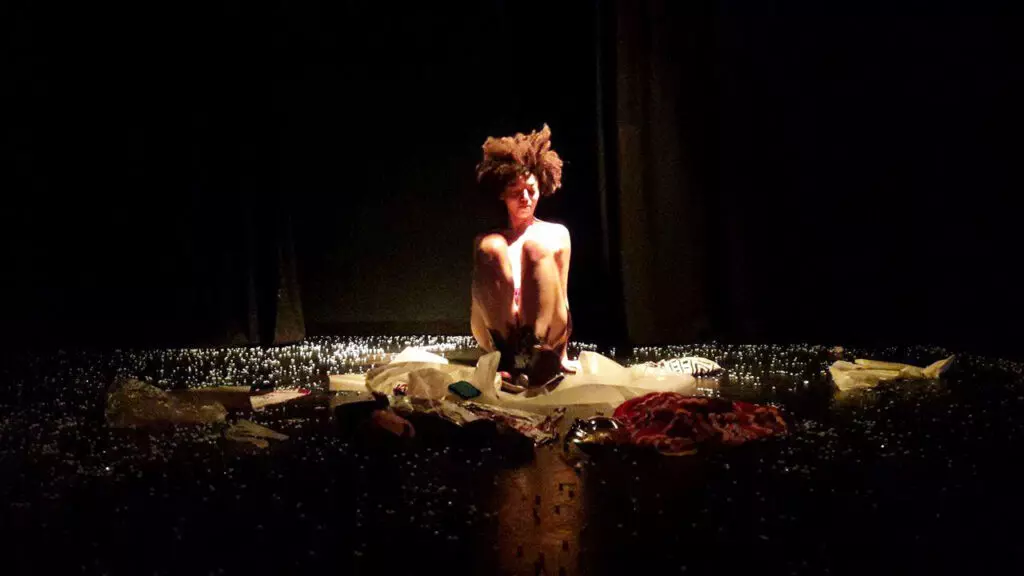
The cunche is a traditional costume of the Andean cosmovision. In the time of the Spaniards, they arrived and put their mess on our traditions, in this case, it always goes up in prioritization and re-territorialization on the ancestral customs that were lost and emerge again on a present body, the body.
The body as a territorial emergency
The corporal nude is an encounter with the Andean cosmovision and the reflection to communicate the communicative transfer to the maternal encounter. Ana mendieta activist artist found with nature the way to find her identity again so once again when migrating she needed the connection to recount my family tree.
Performance Hemisferich México
Going back to the city to remember that we all come from indigenous blood from the resistance and the taboo of a naked body in a macho country where women have little strength to make known this naked body that will walk down the street, wear a mask primitive and carries a mirror approaching the viewers, while laughing walking seductively shows the vulnerability and nervousness of this body, which approaches men showing the spectral part of the beautiful image and how monstrous vulnerability can be.
Women should not be naked.
— Anonymous comment

Latin American performance references
Regina José Galindo, a performance artist, was born in Guatemala City in 1974, city lives and works. In 1999, impressed by the body-art images she discovered while randomly exploring the library of well-known Guatemalan photographer Luis González Palma, she decided to venture into the world of performance.
Regina Galindo works on the naked body and the priority of violence in her works. She wins her first biennial with the "sack of Berlin" in 2001 which leads her to become known. Her work is important in this work because she recognizes women as a priority and denounces the cases in which she is mistreated in the countries of Latin America and South America and also investigates the migration of South Americans in Europe.
Her body as a woman is the territory for denouncing human rights violations, not only those committed against women, as Regina Galindo points out in her work: “More and more we need contemporary art to have a social, almost ethical use when it comes to transferring it to the education of old and new generations. He lives with us and us, he is talked about, debated about him, and marketed about him but we do not have a manual to help us bring him down to the land of reality where we are formed as individuals. Our fulfilled dream would be that works of contemporary art would have the real and immediate effect of changing the most despicable human attitudes.” That is precisely the project that links violence and video art. Regina Galindo wants to make artistic action possible as a motor of change for societies.
Chilean performer, an exiled poet who lives in Canada. Cecilia Vicuña Ramírez is considered one of the most authentic and multifaceted voices in contemporary poetry and an artistic powerhouse that embodies creative exploration and political resistance.
In the collective work Radical Women, I compare the timeliness that Vicuña's work suddenly acquired concerning to other works that are inevitably entrenched in the circumstances of its creation and in the local languages with which they were created. Perhaps because of this displacement, because of Vicuña's constant feeling of “feeling outside” of the Chilean art circuit, her work was capable of absorbing and adopting obsessions that cross borders and hemispheres.
The author of the performances points out: Cecilia Vicuña, one could say: that the songs and poems of Cecilia Vicuña go through different dimensions of time. Her performances are rituals in which she goes from speech to song, from song to whisper, raising and lowering the volume, from one language to another, going from the known to the indecipherable. From her mouth, that space of the body that the artist called the Spit Temple (Templo e 'Saliva), her prayers come out. There is born the union of what has been said with the circumstances of the cosmos, that which is yet to be said, that which is pure energy, pure potential. Cecilia has taken the astronomical concept of the quasar (from the English quasi-stellar radio source) to define these songs and poems that are created at the moment, which makes them something exceptional.
She reimagines what has already been written, alters it, improvises it in each new space where they take place, reinforces them, breathes life into them again, gives them power in action. In almost 50 years of development of her work, these ceremonial events are the moment in which Cecilia's work is expressed in the greatest totality of her. As an artist and poet, she has developed a state of consciousness that keeps her sensitive, open, as if she were a radio antenna, to signals from outside her. In her performances, the knots of oral transmission of all times, of all forms of life, even those that do not yet exist, can be “read”.

